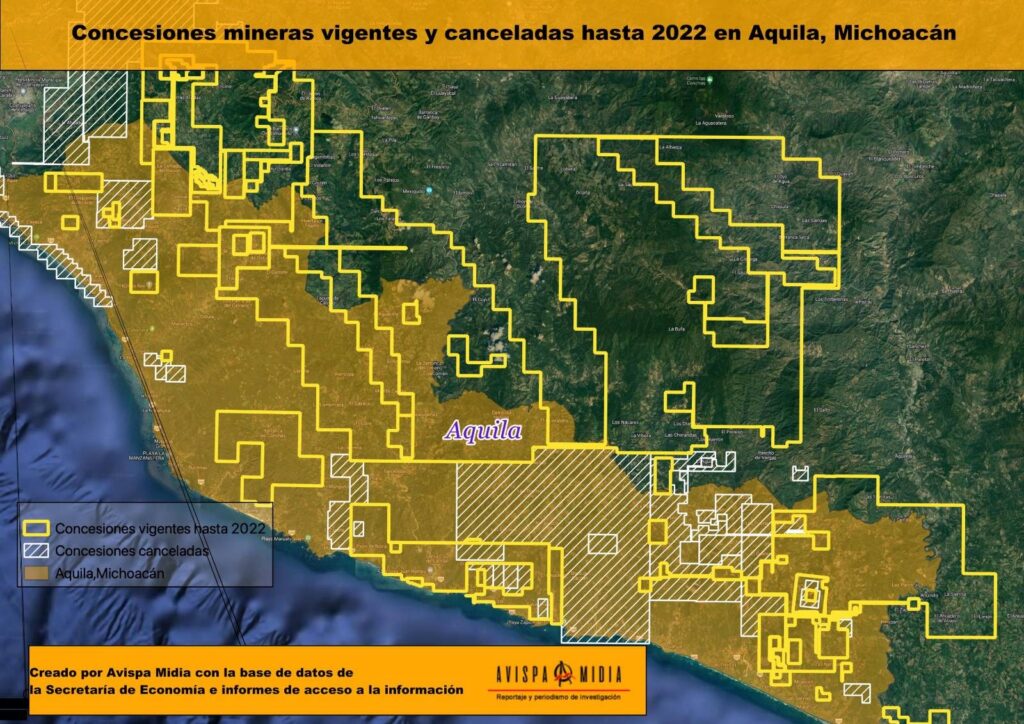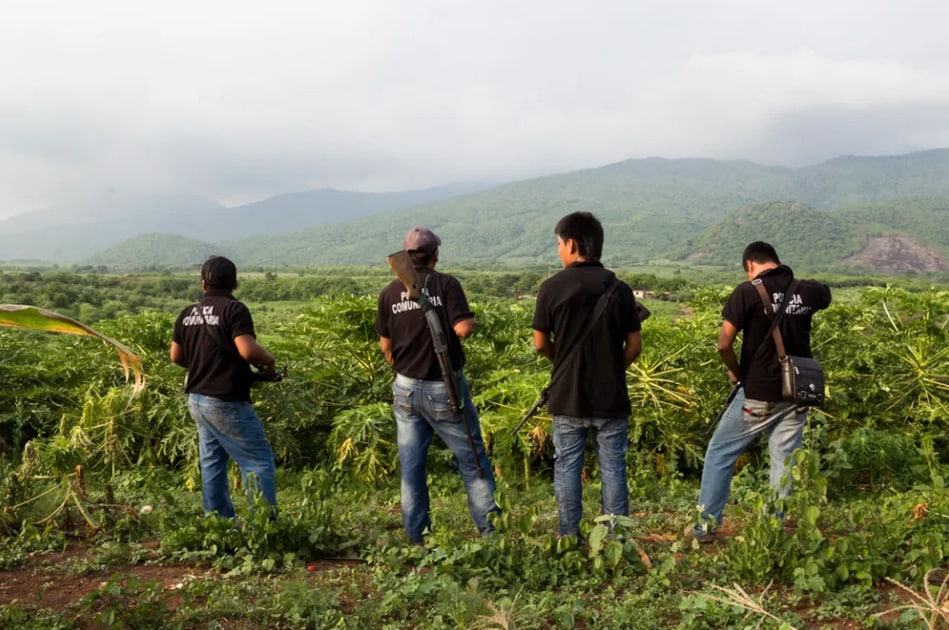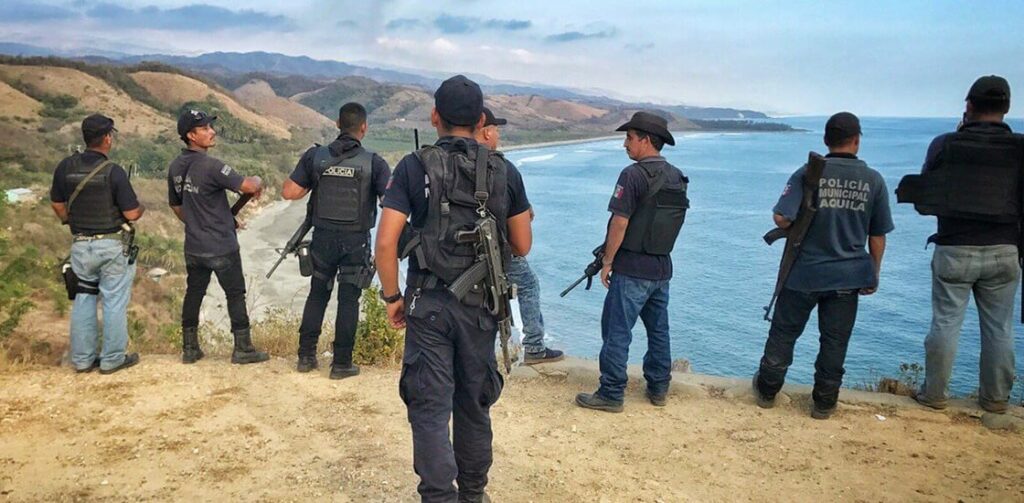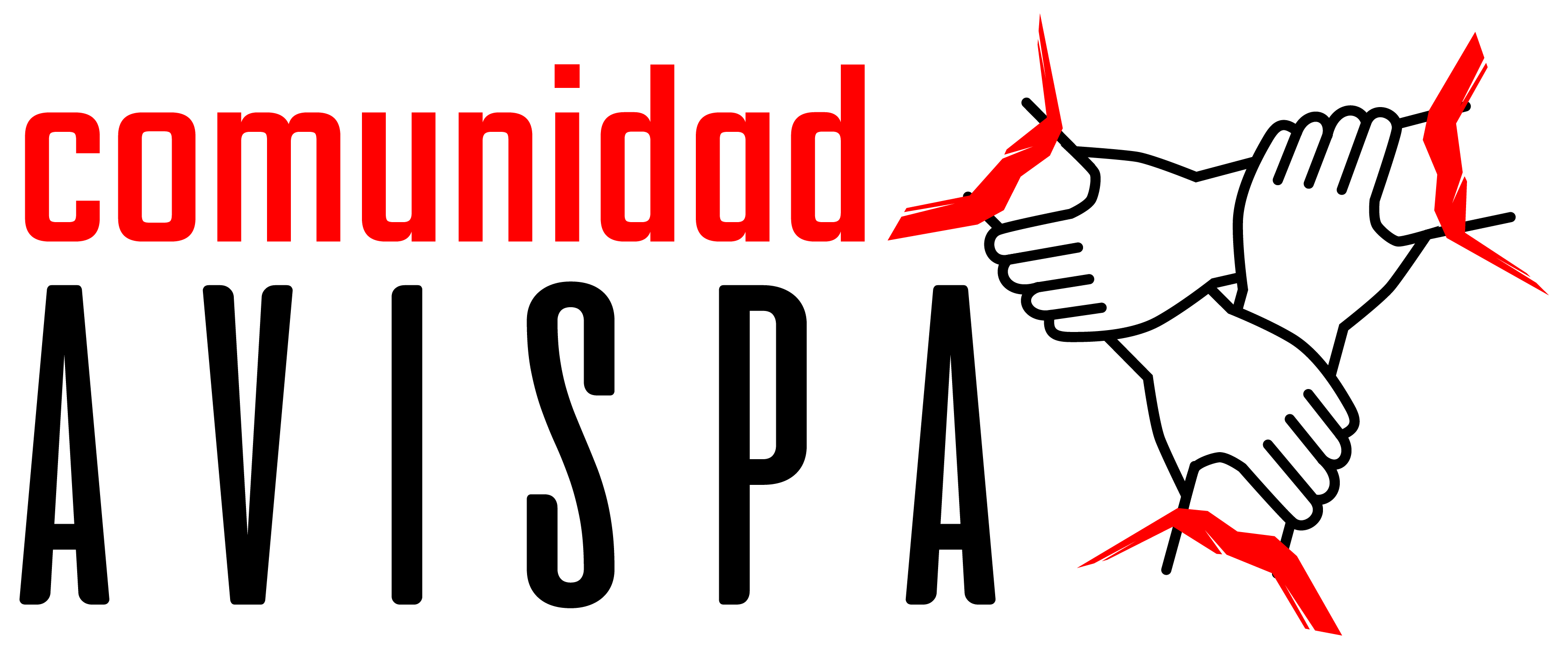On September 6, the governor of Michoacán, Alfredo Ramírez Bedolla, threatened to remove the checkpoints maintained by the Nahua community of Santa María Ostula, which serve to protect members of their community security system. The community has exercised self-government and maintained the operation of their Communal Guard since 2009.
Through a statement, the governor of Michoacán announced that he would order the removal of the “barricades” referring to the security checkpoints that the Nahua community maintains on Federal Highway 200. At the same time, the governor launched accusations seeking to criminalize the armed civilians who he signaled as being “outside the law.”
In an interview, members of the Community Council of Ostula emphasized why they maintain the checkpoints at the entrance to their territory. The community members highlight the assassination of Hidelberto Reyes in 2015, a 12-year-old boy who was killed during an operation involving seven members of the Mexican Army, along with police and marines, when they attempted to remove the highway blockade of the Nahua community of Ostula.
The murder of the boy at the hands of militaries, solidified the distrust of the Nahua community toward the state. Through an act of their community assembly, they reiterated their rejection of whatever external governmental forces from entering their territories beneath the pretext of providing security. “That is the reason why we do not allow any state forces inside our community, it is that simple,” the community members sustained in an interview with Avispa Midia.
The Nahua community also stresses that the Communal Guard does not obstruct free transit at its checkpoints, and that there are no criminal groups that threaten the wellbeing of the people. On the contrary they emphasize, “We will defend the existence, functioning, and permanence of our Communal Guard and of our community security system because these, and not the corrupt governmental security corporations, guarantee the life and wellbeing of the inhabitants of the community and municipality.”
Following the threat from the governor of Michoacán, on Thursday September 8, inhabitants of Ostula pertaining to the municipality of Aquila, protested at the National Guard barracks located near the municipal seat. There, they demanded respect for their internal laws legitimating the operation of the Communal Guard, which together with the self-defense forces in the municipalities of Chinicuila, Coahuayana, and Aquila, sustain the community security system in the Sierra-Costa region of Michoacán.
Mining is Behind the Threat
According to information of the Secretariat of Economy, in the municipality of Aquila alone there exists 101 mining concessions, 58 of which are active. According to the Mexican Geological Survey, in the mining districts of Aquila and San Pedro, there exists important deposits of iron, silver, gold, copper, and manganese.

The company, Las Encinas, S.A., has a concession of nearly 150,000 hectares covering the mountains of the Indigenous Nahua Sierra from the south of Jalisco in the Sierra of Manantlán to the coast of Michoacán from which it extracts tons of iron. In the municipality of Aquila, it operates an open pit mine whose materials are sent to the Alzada Station of Colima for the production of agglomerates and iron sintering in the pelletizing plant owned by Ternium Mexico S.A. de C.V.
Michoacán is the principal producer of iron ore in Mexico. In 2013, the government already momentarily suspended exportations of iron because the port of Lázaro Cárdenas, located just over 200 kilometers from Ostula, was being utilized by the Knights Templar Cartel to illegally export iron ore to China.
Now, behind the threat from the governor, members of the Community Council point to the mining industry’s interests as one of the reasons for which the state seeks to disarticulate the community security system.
“We have (mining) along the northern perimeter of our community. In the municipality of Aquila, there are lands that hold minerals. We think that is the reason for which they are trying to subdue us at this moment,” say the community members who affirm that the Nahua community will never sell the lands where the concessions are located.

Community Security
In the recent history of Ostula, the year 2009 is important, when approximately 2000 community members made the decision to recuperate 1000 hectares of communal lands pertaining to the Nahua people, but that were in the possession of small land owners linked to the Knights Templar Cartel.
At that moment, according to members of the Community Council of Ostula, the community was living under a narco-political regime. Organized crime operated under the cover of state officials and politicians from the Institutional Revolutionary Party (PRI), who favored the division of the community, acting violently against the Indigenous Nahuas who demanded the recuperation of their lands. Between 2009 and 2014, 34 people were assassinated and 6 more were disappeared, among them agrarian authorities and communal leaders, as part of the violent response from drug traffickers and the state.
The community members emphasize that during that time, the municipal police of Aquila had outsiders who didn’t know the context in the region. Worse still, they worked beneath the command of organized crime. For this reason, the community decided to expel the local security forces and retake their communal structure. In that context, the consolidation of the Communal Guard becomes relevant, whose task is to protect not only the inhabitants of the Nahua community of Santa Maria Ostula, but also the other towns of the municipality of Aquila.
“Our Communal Guard is recognized by a community assembly which governs our laws and customs,” explain members of the Community Council of Ostula. They emphasize that participation in the security system is an obligation of community members when they reach the appropriate age to provide free service in benefit of the population.
At the same time, the Community Council functions as the body where proposals sent to the General Assembly are analyzed and approved, and where support for the functions of the Communal Guard are continually emphasized.
For his part, the lawyer Raymundo Martín considers the intention to prohibit the activities of the Communal Guard as “an attack against the autonomous practices” of the Nahua community. At the same time that the governor makes these statements, there exists in process a reform to the public security system law in Michoacán, related to the municipal organic law, which seeks to grant validity only to communal guards recognized by the state. However, the legal basis for the communal guards lies in Article 2 of the Mexican constitution, as well as in international treaties like Convention 169 of the ILO.
The community members affirm that when they recuperated their lands and founded the population of San Diego Xayacalan, they didn’t have weapons. Now that they have them they do not intend to disarm because their self-defense is dependent upon them in the context of extreme violence in Michoacán. For this reason, they emphasize their concern for the statements from the governor of the state, aiming to disarticulate a fundamental security structure for the Nahua community. As they stated in a communique, “This leads us to suspect that the complicity between organized crime and governmental institutions continues to prevail.”

Peace Amidst Worry
The community of Santa Maria Ostula is an oasis amidst spiraling violence in Michoacán. While the Nahua community members assure that there doesn’t exist homicides in the municipality of Aquila where the Communal Guard operates, in contrast, from January to July of 2022, the Executive Secretariat of the National Public Security System (SESNSP) recorded 1270 murders in the state, showing an increase of 70% compared to 2018.
The Indigenous community of Ostula affirms that their struggle has been peaceful but spirited in defense of their territory and organization. “Our community is one of the safest places in the country where we can live in a climate of peace and freedom, carrying out our everyday social and economic activities, because those times of violence, fear, anxiety, and terror are behind us,” they emphasize through a public communique.
“The (governor) doesn’t understand how we are organized. I think it is the safest municipality in the state,” affirms one of the community members interviewed, who even invites the governor to visit the Nahua community: “Let him come without security because we are going to provide it here,” he declares.The population of Santa Maria Ostula assures the foundation of its Communal Guard lies in the self-determination and autonomy of the community. For its part, the National Network of Human Rights Organizations “All Rights for Everyone” (Red TdT) released a statement on Monday September 12, declaring that the organization of Ostula has constitutional protection in relation to their human rights, “whose fulfillment corresponds to the Mexican state, in their responsibility to uphold the collective rights of Indigenous peoples and communities.”


